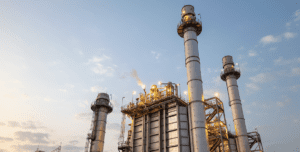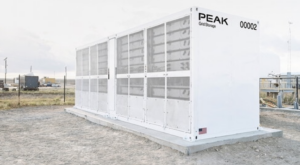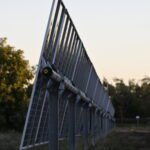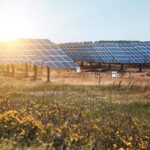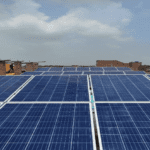Recent advancements dramatically reduce loss due to weather conditions, but there is still much more the industry must do.
Solar energy skeptics have long argued about its supposed unreliability. “The sun doesn’t always shine!” is their most common refrain. While this argument is easily discounted, it is true that environmental conditions can affect the energy collected by photovoltaic (PV) modules. In recognition of this fact, solar tracker manufacturers are innovating to help reduce weather-related loss, but an industry-wide approach for confronting and mitigating weather-related risks has yet to be developed.
With the ongoing expansion of solar energy projects, and the likelihood of increasingly unpredictable and extreme weather incidents, it is inherent upon the industry to address this concern with a forward-thinking strategy. Through cooperation, collaboration, and innovation, the best minds of the industry must work together to develop comprehensive solutions through the following:
- Developing standardized best practices for weather resilience.
- Engaging data-driven risk assessment models.
- Collaborating on research and public policy advocacy.
- Innovating financial risk management and insurance products.
Steps to a Stronger Solar Sector
An examination of each of these focus areas allows us to review how this approach can be implemented and what solutions are currently available or under development.
Developing Industry Standards. Some companies have proactively begun introducing technologies that provide solutions for hail, wind, and other weather-related risks. For example, PV Hardware (PVH) has introduced its “Diffuse Control” algorithm that can maximize energy collection during overcast conditions, and the company has collaborated with DNV Energy to research and identify best practices for mitigating module damage from inclement weather incidents—most specifically, hail.
However, as an industry, there are no widely adopted standards for resilience in regions prone to extreme weather or even common weather hazards in mild climates. Developing resilient design standards to provide best-in-class protective measures, as well as creating climate-specific solutions tailored to different climatic zones (such as those prone to hailstorms, hurricanes, or tornadoes), would be an effective first step toward implementing an industry-wide solution.
A primary, and legitimate, concern among many in the industry is the initial increase in capital costs that these design standards may generate. Due to research and development costs, specialized engineering materials, or additional planning required, the acquisition and installation costs of these new standards will undoubtedly increase. However, it is believed that these costs will ultimately be offset by the reduced risk of damage and/or by government incentives encouraging the use of weather-resistant technology (much as the Inflation Reduction Act has helped offset costs of new U.S. solar manufacturing today). In addition, long-term expenses will decline through reduced maintenance and repair costs, an expected extended system lifespan, and predicted lower insurance premiums.
Taking Better Advantage of Data and AI. The solar industry could benefit from a stronger focus on using data and artificial intelligence (AI) to predict and mitigate weather-related risks. PVH has been pioneering this practice through its Windsense AI technology, which utilizes site-specific data to provide real-time wind forecasts helping to secure installations before severe weather strikes. By leveraging advanced analytics and weather forecasting tools, industry leaders can create better predictive models that trigger advanced protective technologies before a storm or weather incident occurs, ultimately reducing system downtime and/or damage. Furthermore, the development of industry-wide metrics will help quantify the risk-and-cost benefits of protective tracker technologies or module-specific coverings.
Research and Public Policy Collaboration. By encouraging and facilitating increased collaboration among manufacturers, insurance companies, and policymakers, the solar industry can create comprehensive risk mitigation strategies that help reduce weather-related losses and costs. Working together in partnerships, industry leaders must join universities and governments in identifying ways to improve the durability of solar modules and other equipment under challenging weather conditions. In addition, the solar industry must collectively push for governmental policies that incentivize the use of resilience-focused technologies, much like other government incentives work to support the adoption of other long-range energy goals.
Innovating Financial Risk Management. Finally, leaders in the solar industry must work together to encourage the creation of specialized insurance products tailored to the evolving risks of climate change and weather. Innovative insurance products that offer reduced premiums for companies using advanced protective measures will help encourage increased adoption of these technologies. The introduction of collaborative risk-sharing insurance models that pool resources to protect solar investments at the regional or national level would help reduce insurance costs as well, while further incentivizing the use of weather-resilient safeguards.
Long-Term Strategy
As hail-related incidents are projected to increase, the failure of the industry to address weather resilience strategies and incorporate these measures could ultimately result in much higher costs from system damage, insurance claims, and lost energy production. Although introducing standardized best practices for catastrophic weather resilience will undoubtedly increase upfront costs, the long-term savings through reduced operational costs, fewer disruptions, and extended system lifetimes will help to offset these investments over time. This holistic, collaborative approach will inspire thought leadership on this matter and encourage the industry to view weather resilience not as an added expense, but instead as a necessary investment in the future viability and financial stability of solar projects.
—Kevin Conner is business development director for PV Hardware USA.



